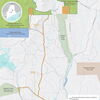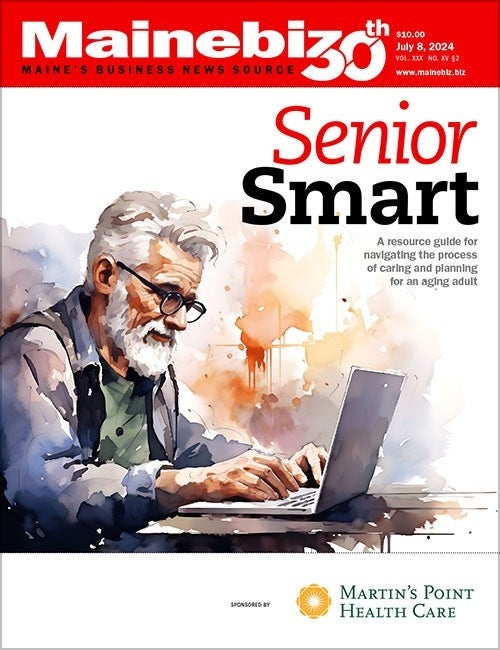University program helps Maine cos. lower costs
 Photo / Tim Greenway
James Colony, CEO of Newfield Design, holds the company's Expandable Radio Control System in a workspace at the company's location in West Newfield.
Photo / Tim Greenway
James Colony, CEO of Newfield Design, holds the company's Expandable Radio Control System in a workspace at the company's location in West Newfield.
By Newfield Communications CEO James Colony's count, students have saved his West Newfield startup $50,000 in the last six months.
His is just one company benefitting from work performed by manufacturing students at the University of Maine and University of Southern Maine that has brought nearly 400 products and manufacturing processes closer to market.
"The idea is that anyone can go into our center or USM and say 'Hey, I need help with this' and get a quote," says John Belding, director of UMaine's Advanced Manufacturing Center in Orono.
The program, funded by a three-year, $493,577 grant from the Maine Technology Institute, gives businesses access to technical expertise and the student work force of Maine's two largest public universities. Its purpose is to boost Maine's technology sector; create more jobs in manufacturing and research fields; and respond to demand for R&D and commercialization services from Maine's precision manufacturing companies.
Halfway through that grant, UMaine's AMC has billed out nearly $300,000 in work, for which companies pay a fee, completing some 300 projects and employing 20 students, Belding says. For most projects, Belding says the center provides a quote based on the scope of work and keeps rates around the industry average.
"We try not to compete with other people who are doing this as well," Belding says. "We don't want to have unfair competition out there."
For projects that have received MTI funding — around 25% of the UMaine work — the university charges no overhead expenses as "it's basically the state paying the state," Belding says. Many of those projects, he says, come to the center for development work before applying for an MTI grant and have continued support after.
Colony, says the program holds "huge value" for both business and students, helping companies to cut costs while offering hands-on training to the next generation of Maine's work force.
"This program has appeal for a wide range of businesses, but I would say it's best suited for high-tech applications simply because those are the hardest positions to fill and the more exposure you can get people with work experience, the better for both of us," says Colony.
Through the program, students work for and are paid directly by the universities, with participating companies paying a fee for service that helps to support the UMaine center and USM's Manufacturing Applications Center. Both centers share three full-time employees who were hired after the program attracted $567,000 in private funds, adding to the MTI grant and supporting the purchase of new equipment at the Orono and Gorham campuses, which offer complementary services.
UMaine's lab specializes in hands-on manufacturing and has a full suite of CNC (automated manufacturing) equipment and computer-aided design software, while USM's Manufacturing Applications Center focuses on 3D scanning and rapid prototyping.
"We try to make sure it's something that's not offered elsewhere in the state, that it's a brand new, prototype of something that hasn't been done before," says Belding.
Newfield Design, which is developing technology to connect disparate communications devices for emergency services and military applications, enlisted the help of three students over two semesters to help test a new manual on how to program their system.
"It's basically a 300-page document on how to write the code, which we were able to give students," Colony says. "It basically told us 'Hey, we're not crazy, this is well written and we'll be able to use it moving forward,'" he says.
Colony says he was impressed with the skill of the student workers.
"I've run a bunch of startup companies and typically with something like this you have to dedicate resources to supervising the effort," Colony says. "In this case, the education level was such that we really didn't devote a lot of time to that."
That environment, Colony says, also makes scouting new employees easier.
"This program gives us the opportunity to try some of these students before we buy them," Colony says.
At USM, a slightly different model has more students working on projects for small businesses and startups, according to USM Manufacturing Applications Center Director Michael Wing, who estimates that 70 to 80 students have helped complete 35 projects in the last year and a half.
Projects completed by USM students as part of the program include work on a new laundry detergent targetted for the infant care market; display units for scaled-down hydroelectric stations; and reverse engineering discontinued parts for antique cars and machinery.
The USM program, dubbed Campus Ventures, brings together students from a range of disciplines, including engineering, chemistry, physics and biology, to "build teams, go through the deliverables, design those and then start working to them," says Wing.
In Vassalboro, DP Industries owner Brent Dugal says working with UMaine saved his horticulture supply company 40% in production costs by automating the company's printing operations.
"It's helped make us more competitive and reduce cost of printing so we can be more competitive with overseas markets and go after larger clients," says Dugal.
DP is already in talks to collaborate on another project with the AMC, which he credits with helping to address the state's oft-cited skills gap.
"This program is very well-suited for manufacturers, design and fabrication automation, which are skills that are now more difficult to find in the state," says Dugal, who would like to see the program extended to the state's community college system.
At Brunswick`s Maritime Applied Physics Corp., Program Manager Keith Skidmore says AMC students helped to perform thermoelectric device testing for MAPC's Project Mercury, designed to generate electricity from hydrothermal vents found in the volcanic spreading regions of the seafloor.
"Some of the larger and more expensive equipment needed, like the AMC's MTS hydraulic press, made it impossible for MAPC to design and perform the tests in-house," says Skidmore.
About 60%-70% of the work the AMC performed was completed by students, saving the company an estimated $20,000 to $30,000 while exposing them to "real-life hands-on experience that many engineers don't encounter until after they graduate and are working in their field," Skidmore says.
Belding says that while the program is not limited to Maine-based companies, it does try to find a connection for Maine companies.
"For example, if we commercialize a new product for an out-of-state company, we try to find Maine manufacturers to support the production," he says.
Belding adds that the program is considering expanding based on the state Workforce Development Board's focus on skills training, which he says could entail "more students on smaller projects and internships to make sure students are going directly to companies."










Comments